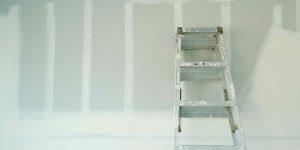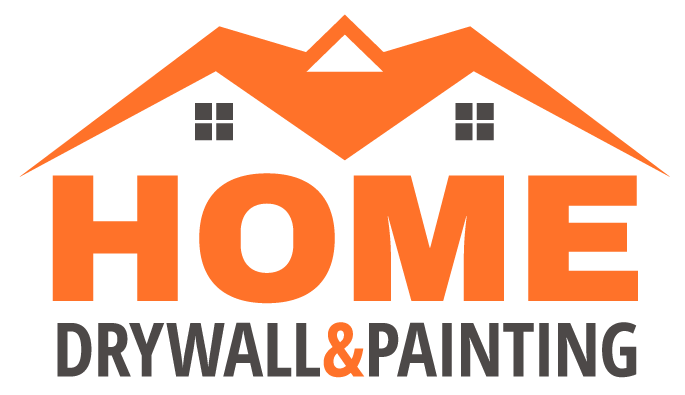
Drywall is the most common material used to finish homes and buildings. It’s lightweight, easy to use, and inexpensive. Because it’s so common and easy to use, drywall is also very susceptible to damage. It can easily get scratched or dented during construction, which can be a real problem if you’re not careful when hanging it onto your wall frame. This article covers the most frequently asked questions about drywall and drywall repair: Denver Colorado Drywall Repair Services
Can You Repair Drywall?
Yes, it is possible to repair drywall. It’s also easier than you might think.
Drywall can be repaired in several different ways, but the most common method is with a patch kit. The kits have all the tools and materials you need to repair them, including instructions on how to use them correctly. The process typically involves filling the hole in your wall with some sort of filler material, then sanding it down before painting over it with primer and paint or wallpaper as needed for your specific situation.
If your drywall has been damaged so badly that using a patch kit won’t work, there are other options available depending on what needs fixing. If there are only small holes in your walls or ceiling—such as those left behind when hanging pictures—you may be able to cover them up by putting up new wallpaper over top of old wallpaper. If there’s just one large area where someone took out too many pieces of sheetrock at once, you can cut new pieces out for yourself so that everything looks smooth again.
How Do You Fix Drywall?
There are many tools you can use to repair drywall, but here are a few of the most common:
- Drywall saws have small and large teeth for cutting both plasterboard (also known as gypsum board) and metal lath. They’re usually made from steel or carbon steel and come in either electric or manual versions. Electric saws are more expensive than manual ones because they’re more efficient at cutting through hard material like concrete; however, some people prefer to use a manual version because it’s lighter weight and easier on their wrists when working overhead.
- Drywall knives come in two types. There are regular knives with straight blades used for cutting holes into walls before hanging panels, as well as curved knives with serrated edges, used when installing new drywall over old damaged areas. This is so they don’t get caught while you’re tearing off old pieces around them during removal processes before beginning repairs work. Both types should have comfortable handles so that your hand doesn’t cramp up after hours spent working with them.
How Do You Fix a Hole in a Wall Without Drywall Mesh?
Drywall mesh is a fabric-like material that’s woven to create an open grid pattern. It’s used in conjunction with drywall tape to fill nail or screw holes, or when you’re working on patching over areas of your wall where the surface has been damaged.
The mesh can also be used as a replacement for missing pieces of drywall, but it’s best to leave this type of job up to a professional rather than attempting it yourself.
Drywall taping comes in several different forms, including paper-backed, fiberglass-reinforced gypsum board, and self-adhesive varieties that are easy to install without any tools required at all! The latter option is most commonly used when repairing cracks because it makes installation faster and easier; however, these tapes aren’t quite as durable when compared with their paper counterparts.
Can You Fix the Nail Pops in the Sheetrock?
Yes. You can always patch up the nail pops yourself, but be sure to do it right. How you repair a nail pop depends on how large the hole is and how much of it is torn away from the drywall. If the hole is less than 1/4 inch, you should use a joint compound to fill it in with a putty knife. Smooth out any lumps or bumps left by your knife, then let it dry overnight before painting over it.
If there’s more damage than just one small hole and some flaking paint at its edges, chances are that either more of your sheetrock will start coming off if you keep using joint compound or that another section of your wall will start looking like Swiss cheese when water gets through any open holes. In these cases, call a drywall expert who knows how to properly repair drywall instead of trying DIY methods yourself!
Can You Remove Popcorn Ceilings?
You can remove popcorn ceilings with a drywall sander. This is by far the easiest method.
You can also remove popcorn ceilings with a drywall knife. If you don’t have access to any power tools at all, this may be your best option—it’s not as difficult as it sounds! You’ll need to scrape down all of your walls before installing new drywall, but if that’s all you need to be done right now this is probably your best bet.
Finally, you can remove popcorn ceilings with a chemical stripper. This works much like using a heat gun or chemical stripper on its own. However, using both together will minimize damage to surrounding materials.
How Do You Prevent Ceiling Cracks From Spreading?
One of the best ways to prevent a ceiling crack from spreading is by using a drywall repair kit. These kits have everything you need to close your cracked ceiling, including:
- Drywall tape
- Drywall nails
- A drywall knife or trowel
In addition, they will provide instructions on how to use these items properly so that they will last as long as possible.
Denver Colorado Drywall Repair Services
Hopefully, this post has helped you better understand the process of drywall repair. If you have any questions, feel free to reach out to the drywall experts at Home Drywall and Construction in Denver, Colorado! We’re happy to answer any queries you may have and provide more information on our drywall services. Contact us today!
